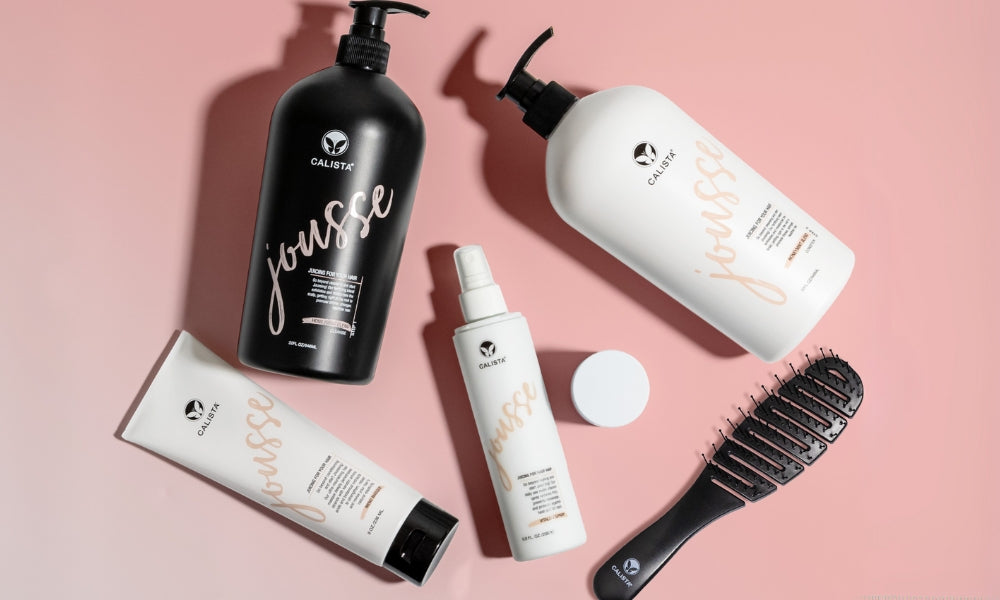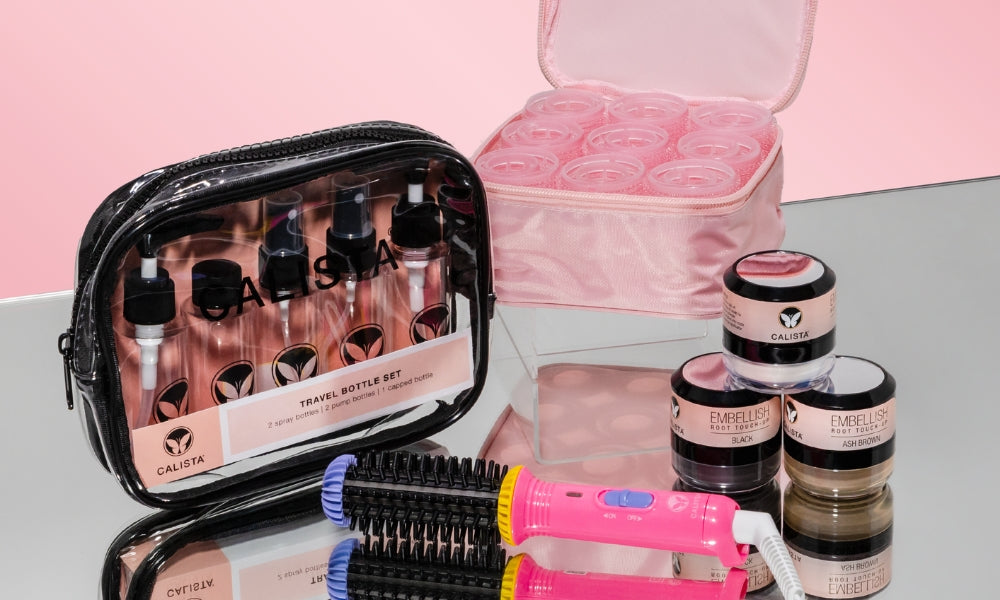At Calista, we’re all about embracing your age. Whether you’re experiencing first-time grays in your 40s, undergoing thinning in your 50s, or seeing major hair loss in your 60s and 70s, it can be uncomfortable and confusing to see change happening before your eyes. Even if you recognize that changes in your hair as you age are inevitable, it’s still jarring to be unsure of what’s standard, how to proceed, and whether or not there’s anything you can do. Today, we’re talking about the common side effects that aging can have on your hair and how you can tackle these problems while still embracing your age (and your fabulous hair)!
Going Grey
This is likely the most talked about side effect of aging when it comes to hair. According to hair research done at Colorado State University, by the age of 50, half of men and women will have at least 50% grey hair. Why does this occur? Like many hair issues, it all starts at the root. The root of every strand of hair is surrounded by a follicle, which is a cylinder of tissue that lives beneath the skin. The follicle houses pigment cells, which constantly churn out a chemical called melanin. Melanin is what gives your hair its natural color. As we get older, less and less melanin is produced in our hair follicles, which leads to the eventual greying of each hair strand.
While it’s possible to go grey prematurely due to health issues or excessive stress, the lack of melanin production is the most likely cause. While there is no known way to reverse greys, there are endless ways to color your hair or, if you’re feeling particularly BeautyBrave, keep your hair healthy and strong while maintaining your newly natural grey tones. There’s a lot of power in reclaiming your grey, and many modern styles that encourage and embrace grey blending. Can’t get to a colorist at the moment? Try using a temporary color and coverage product like Embellish Root Touch-Up!
Thinning and Hair Loss
Another known hair peril of aging is the thinning and potential loss of hair. While it’s common knowledge that human beings actually shed an average of 100 hairs per day, the hair loss that often accompanies aging is falling outside of this normal window. While this can be due to medical issues, the most common reason for the seeming loss of hair is the slowing of growth. In short, you’re now losing more hair than you’re growing. Just like many other processes of our bodies, hair growth becomes less consistent and efficient over time.
While how much hair you have on your head and body is ultimately determined by genetics, thinning hair is common as you age because the follicles have grown weaker. Every time the cycle of growth is repeated after a hair is lost, the returning hair is a little thinner. Some hair follicles even stop producing new hairs altogether.
According to the American Academy of Dermatology, 40% of women have visible hair loss by the time they reach age 40, while men can begin to show signs of hair loss as early as 30 years old. This can be difficult to reckon with, as it can call for a change in your hair routine or even your hairstyle, as many often feel they need to wear their hair shorter in order to combat the appearance of thinner or more fragile looking hair strands.
While there are plenty of styling tips for making your hair look thicker, the best way to combat this thinning is by ensuring you maintain a healthy lifestyle, wash and brush your hair less frequently, and use products that are free of hormone-disrupting ingredients like parabens and sulfates. A shampoo and conditioning routine with naturally-derived ingredients is ideal.
Breakage
Not only does the hair growth slow with age, but the follicles also get finer and thinner, making hair more prone to breakage. The loss of melanin in hair follicles as we age is also combined with a loss of protein, making the hair that much more fragile. Aging hair has less bounce and elasticity, so when pulled, it simply breaks off. The protective cuticle on the outside of hair strands also recedes over time, causing hair to break even faster.
The best way to combat breakage is to avoid excessive heat exposure and coloring. While going grey might inspire you to ramp up your coloring routine, try to avoid bleaching and at-home dyeing practices. Instead, always consult a professional when it comes to permanently altering your color to give your hair its best shot at staying healthy and strong. While the thinning of your hair as you age might implore you to start using more heated styling tools to get that volume back, never trust a hair tool that isn’t using ceramic and ionic properties. These components safeguard against the drying and breaking that styling with hot tools can cause. Try to stick to heat-protected styling tools and utilize styling products like volumizing foam or texturizing spray as much as possible.
Do you have questions about aging hair? Our team is always here and ready to answer them! Leave us a comment or contact us at CusomerCare@calistatools.com









Leave a comment